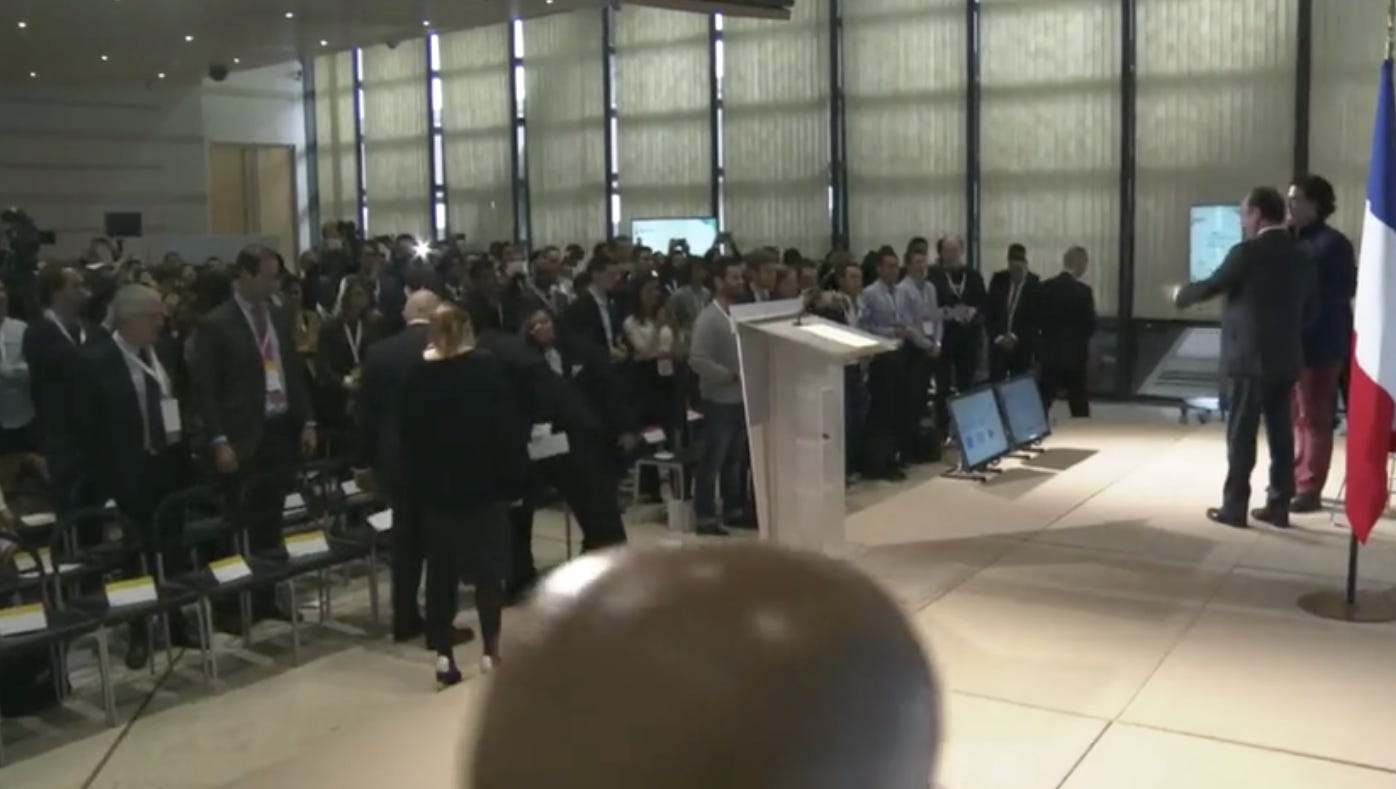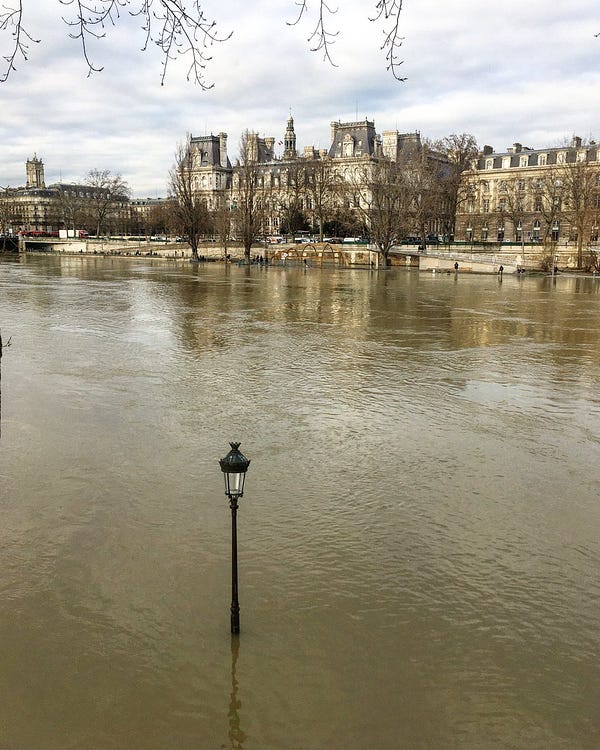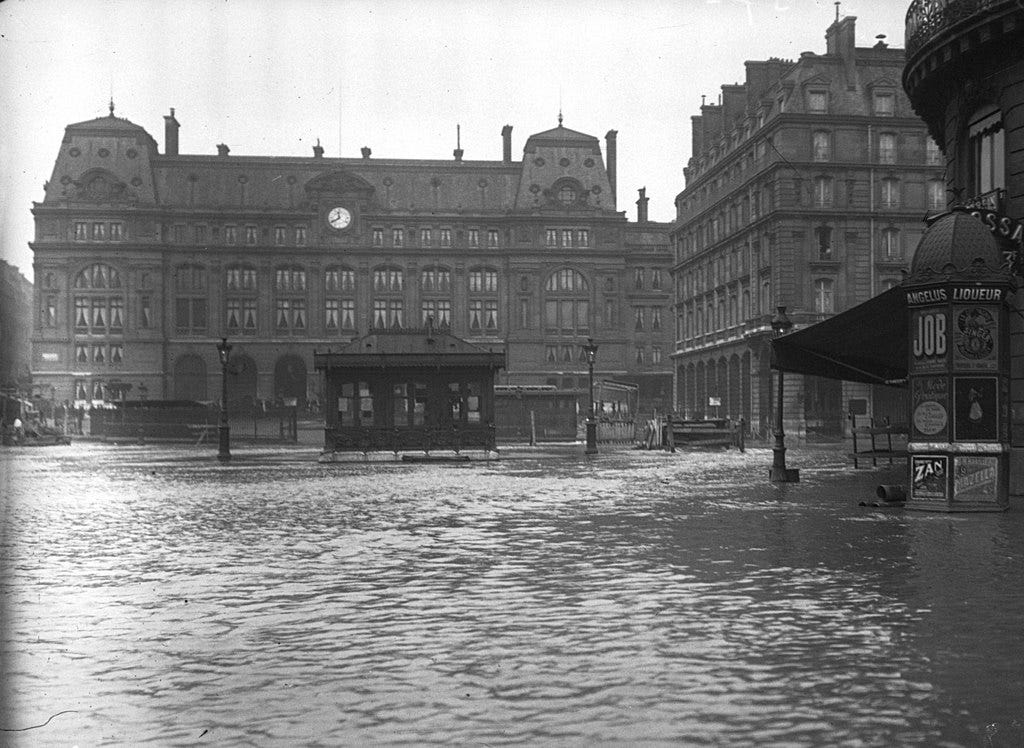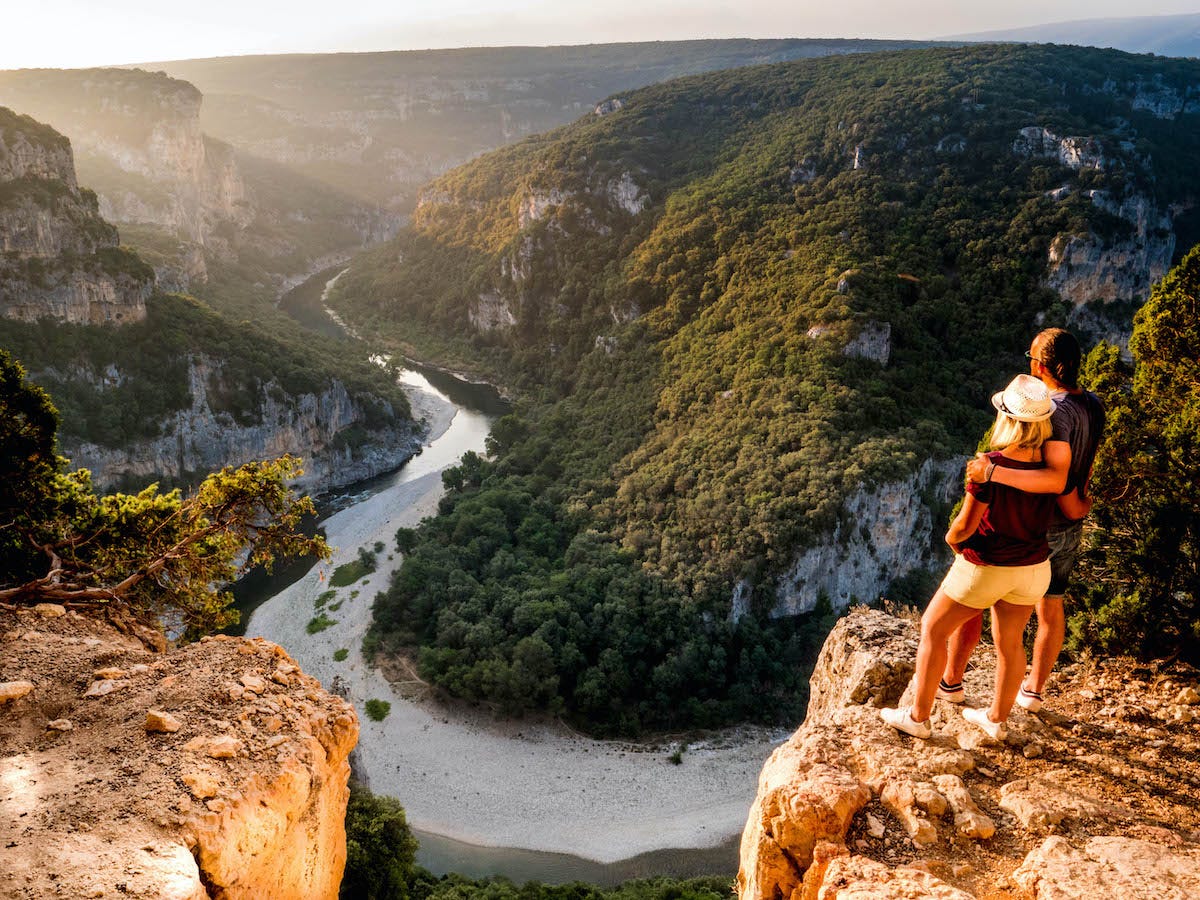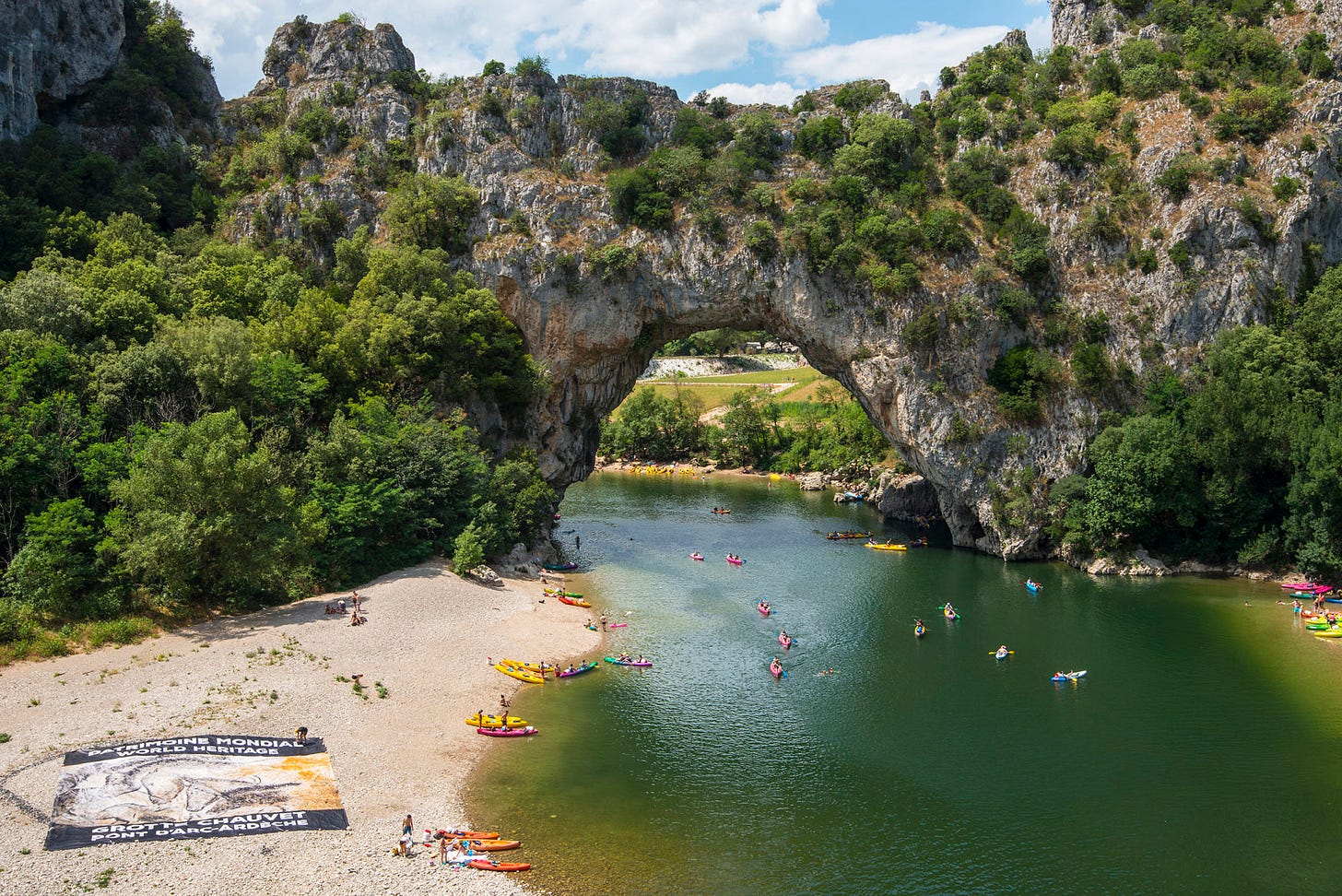Once Upon A Time In France: A Swelling Seine, Vacances Woes, and Sanofi's Sorrows
Dreaming of Ardèche.
I visited Paris once in January and have attempted to avoid the capital city ever since during these most gruesome of winter weeks that run through early February, a bleak period on the calendar that will test the devotion of even the staunchest Francophiles. The occasion was a startup pitching event organized by the French government along with the announcement of a new French Tech startup visa.
The goal was to attract more international startup talent to Paris and so they wanted to break with French-language protocol and organize the event in English. Which meant they wanted an English speaker to act as host. Being a native English speaker, I neatly checked the first and most important (and possibly only?) box on the list of criteria. So I left behind the moderate climate of Toulouse for the Great Frozen North.
The event went well enough, I suppose. During the morning, I had the honor of introducing President François Hollande and shook his hand on stage. Here’s a crummy picture of me, standing next to my good friend Frank (I’m pretty sure we’re on a first-name basis now) on the stage. That’s me to the far right wearing my official red Euro-dude pants that are issued to all males over the age of 40 upon arrival in France.
The problem was that after the event, I still had two more days in Paris. As luck would have it, temperatures plunged several degrees below 0 Celsius. Despite wearing every bit of winter apparel that I owned, I couldn’t escape the biting wind that seemed to intensify as early darkness settled over the city starting around 3 p.m. Even brief sojourns outside required me to tap my nose to break the miniatures icicles forming inside my nostrils.
The experience helped me appreciate that Parisians suffer enough gloom in the winter during typical times. The pandemic was already adding to that sense of foreboding this season. So residents of this city hardly needed another sign of nature’s wrath to extend their misery.
And yet, here we are.
The Seine flooding its banks has not quite become an annual ritual. But it’s doing its best. The heavy rains starting in late January and sludging into early February are already adding to the un-festive spirit of the season. But the rising water levels offer another daily chance to stop and wonder what kind of greater doom awaits.



The rising Seine does not appear to be as severe as the January 2018 episode which stoked fears that the Louvre Museum would be flooded. Or as the June 2016 flood. And it should be noted that this flooding is not confined to Paris. According to France Meteo, 21 departments have been at risk for heavy rains and possible flooding.
But in Paris, the Great Flood of January 1910 is a touchstone of this city’s history. The Seine overflowed its banks and flooded tunnels and sewers and forced thousands to flee their homes.
There has been substantial engineering work done since then to prevent a catastrophe on this scale. But according to the Organization for Economic Co-operation and Development, not early enough. In 2014, the OECD issued a fairly scathing report saying the country had gotten cocky in recent decades because there had been few flooding incidents. In addition, more industry had concentrated around the Seine, raising the specter of a national economic disaster if the city experienced another 100-year flood:
According to flood scenarios, the damage from such a catastrophe has been estimated to be between €3 to €30 billion for direct damage, together with a significant reduction in GDP which, over five years, could reach €1.5 to €58.5 billion, i.e. a consolidated total of 0.1 to 3%. The resulting contraction in business activity could have a significant effect on the demand for labor; up to 400,000 jobs could be lost in the worst case scenario.
Yikes. The French government insisted that it got the message and then insisted it really got the message after the 2016 flood. So it increased funding for flood prevention measures and developed better contingency plans. The French government asked the OECD to come back and do another check-up. And the OECD basically said: Nope. Try Harder.
This work finds that, since 2014, the mechanisms aimed at improving public policies on flood risk management have enabled widespread mobilization of public and private actors, especially following the floods of May-June 2016. However, these dynamics still fall short when compared to the challenges associated with this major risk, especially with respect to urban development policy, territorial management and prevention funding.
That follow-up report calling for even greater flood prevention funding and more restrictions on development was issued on January 26, 2018.
Just days later, the Seine began flooding again.
Vacances Woes
Upon moving to France in late August 2014, we scrambled to get our kids enrolled in French schools, a process that took a couple of weeks before they finally began attending in the second half of September. Our relief that they were finally starting was cut short when we learned that in just two weeks they would begin a TWO WEEK VACATION.
After recovering from that initial shock, we collected ourselves and managed to plan a wonderful week in the Pyrénées. We hiked, we ate at local restaurants, and we even visited our first French thermal bath. It was a week discovering what has become one of our favorite regions of France. But this little trip was also a microcosm of France’s most important economic engines.
The French are somehow derided as lazy for having such expansive vacation benefits. However, such mockery misses the larger economic role that vacations play, and not just in giving employees a better work-life balance. These vacation periods are a national imperative to drive people out of their homes and visit often smaller villages and remote rural areas whose economies often are largely dependent on the flux of visitors.
France is typically the most visited country in the world, but a large percentage of its tourism industry’s revenue is generated by internal travel. While tourism everywhere has suffered a blow during the pandemic, it has been particularly devastating in France.
This week marks the start of a crucial vacation period: A four-week school holiday. France is divided into 3 regions and each region has 2 weeks of vacation over that period. For many mountain regions, the February-March vacation is the most important economically. The next two-week vacation is in April, but thanks to climate change the ski season only rarely lasts long, especially in the Pyrénées.
The good news is that the government did not shut down travel as many had feared. But with ski lifts remaining shut, a 6 p.m. curfew in place, and restaurants still closed, tourism will be down sharply. It’s a subject that has dominated front pages of newspapers and nightly news talk shows in recent days as the first weekend arrived. That prominence in the news cycle is recognition of the importance of tourism to the national economy, with Agence France Presse noting that the vacation period has started in a “morose climate.”


The pandemic has triggered a lot of rethinking around the tourism economy. But France is particularly vulnerable during such a crisis thanks to a decades-long bet that tourism was the best way to support small town and rural economies that had been suffering declines as farming and other industries grew weaker or disappeared.
In addition to pumping huge sums of cash into these rural areas, France has been launching new programs to save these regions. But it’s hard to see what economic catalyst will change their downward trajectory.
Sanofi’s Sorrows
While vaccine campaigns remain uneven throughout the world, there has been justifiable relief that 3 vaccines have been developed: Pfizer, Moderna, and AstraZeneca. The latter was just approved for use in France.
But making equally big news here has been the failure of French institutions to successfully develop the nation’s own version of the vaccine. Last December, pharmaceutical giant Sanofi said the results of its trials had been disappointing and that its vaccine likely wouldn’t be ready until the end of 2021. A few weeks later, the company announced it would cut 1,700 jobs, including 1,000 in France.
Then in late January, the Pasteur Institute announced that it was abandoning efforts to develop a vaccine following poor testing results.
These failures have provoked hand-wringing over the blow to France’s self-esteem. The nation emphasizes math and science in school and has long bragged of its prowess in these domains.
To fail on the vaccine front is being treated as a national humiliation across the political spectrum. As a Conservative party tweet put it:
“In the midst of a race against time, the Institute Pasteur throws in the towel on its main vaccine project, while Sanofi announces a delayed release to the end of the year, for lack of efficiency, after announcements with great fanfare. This scientific downgrading is mortifying.”


Dreaming Of France
It might be tempting to describe the Ardèche department in the Auvergne-Rhône-Alpes region by its proximity to other more famous places in France. Just south of Lyon. Just northeast of the Cévennes. West of Grenoble. Hugging the Rhône river that flows along its eastern border. Ardèche isn’t home to any great cities. But what this sparsely populated territory does have is some of the nation’s most spectacular scenery.
That includes Les Gorges de l'Ardèche, a 30 km canyon in a natural reserve that runs along the Ardèche river that has carved deeply into the region’s limestone. You’ll find here the Pont d’Arc, a natural stone bridge over the river that is also a UNESCO World Heritage Site. It’s a region rich in natural wonders that provides a great spot for biking, hiking, and camping.
Great Reads
If you’re a fan of Émile Zola’s Nana, then a new project by Paris-based American writer Summer Brennan is a must-read. While during research for her upcoming book, The Parisian Sphinx, Brennan stumbled across a book listing the criminal files of Les Insoumis (“The Undominated.”)
Here’s how Brennan describes the project:
These were women who lived their lives outside the bounds of polite society, but who refused to register as prostitutes. Most were not selling sex on street corners or working in brothels. They were the mistresses of dukes and princes, or even of princesses. In return for their favors, they might receive not money, but an apartment near the opera house, or a small country villa. Some were actresses, some dancers, some world-famous comediennes, while others still were playwrights or journalists who concerned themselves with a dangerous new concept: feminism.
Brennan is writing a series of profiles on these women, doing a fair bit of detective work to round out their stories. The first installment is online for free (future editions may require a subscription).
In other news, The Guardian wonders if Jean Reno is the greatest Eurobaddie ever? France’s weird crime spree continues after police arrested a man in Toulon when he stuffed a severed head in a box and threw it out the window. The French literary establishment is none too pleased that an upstart YouTube star has written a best selling book.
Finally, Emile Chabal, writing in Foreign Policy, wonders if France’s vaccine skepticism is less an issue of anti-science sentiment and more about a growing distrust of the state:
“It would be wrong to write off France’s multifaceted vaccine fiasco as a mere flash in the pan. It highlights much deeper ills. The most obvious of these is a deep crisis of trust in the French state and its representatives.”
Chris O’Brien
Toulouse, France


